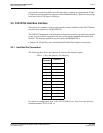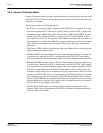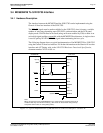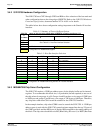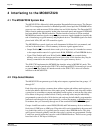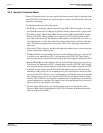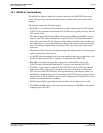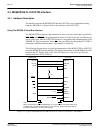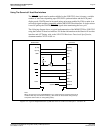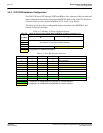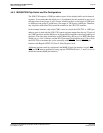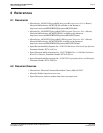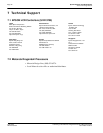
Epson Research and Development Page 25
Vancouver Design Center
Interfacing to the Motorola ‘Dragonball’ Family of Microprocessors S1D13705
Issue Date: 01/02/13 X27A-G-007-04
4.3.3 MC68K #1 Interface Mode
The MC68K #1 Interface Mode can be used to interface to the MC68VZ328 micropro-
cessor if the previously mentioned, multiplexed, bus signals will not be used for other
purposes.
The interface requires the following signals:
• BUSCLK is a clock input which synchronizes transfers between the host CPU and the
S1D13705. It is separate from the input clock (CLKI) and is typically driven by the host
CPU system clock.
• The address inputs AB1 through AB16, and the data bus DB0 through DB15, connect
directly to the CPU address and data bus, respectively. On 32-bit big endian architec-
tures such as the Power PC, the data bus would connect to the high-order data lines; on
little endian hosts, or 16-bit big endian hosts, they would connect to the low-order data
lines. The hardware engineer must ensure that CNF3 selects the proper endian mode
upon reset.
• Chip Select (CS#) is driven by decoding the high-order address lines to select the proper
register and memory address space.
• A0 and WE1# are the enables for the low-order and high-order bytes, respectively, to be
driven low when the host CPU is reading or writing data to the S1D13705.
• RD/WR# is the read/write signal that is driven low when the CPU writes to the
S1D13705 and is driven high when the CPU is doing a read from the S1D13705.
• WAIT# is a signal which is output from the S1D13705 to the host CPU that indicates
when data is ready (read cycle) or accepted (write cycle) on the host bus. Since host
CPU accesses to the S1D13705 may occur asynchronously to the display update, it is
possible that contention may occur in accessing the S1D13705 internal registers and/or
refresh memory. The WAIT# line resolves these contentions by forcing the host to wait
until the resource arbitration is complete.
• The Bus Status (BS#) signal indicates that the address on the address bus is valid.
• The WE0# and RD# signals is not used in the bus interface for MC68K #1 and must be
tied high (tied to IO V
DD
).



